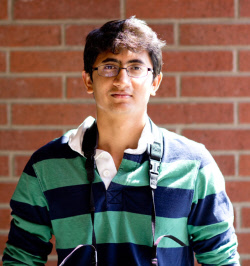An interview with Maheswaran Sathiamoorthy.
One of the Spark editors reached out to you to write for the magazine, but we instead discovered a wonderful photographer. When did you get into photography?
I got into photography in early 2009, so not that long ago. It happened by an accident. I was looking to buy a camera, in fact, any camera and right at that time, somebody at my university was selling a Konica Minolta 5D camera. It was quite a deal and I thought why not. And with every shot I took, my passion for photography kept growing stronger.
Your photos aren’t just about people or places; they humanise objects. What catches your eye about everyday things to make them tell a story?
Yes, you are right. In quite a few Spark issues, I have taken simple objects and put them together to tell stories. We are wired for detecting patterns. We are wired to relate to stories. While a picture can convey a thousand words, I think four pictures can convey more than four thousand words. So in that process, photographs of roads tell us stories of adventure, and toys become soldiers.
Of all that you capture – people, patterns, places, and other things – what do you love the most?
Nothing in particular. Taking portraits of people makes me happy. Capturing patterns makes me excited and energetic, and places and landscapes calm me down. And roads, they are magical!
What is your opinion about ‘touching up’ photography – do you prefer to be a ‘purist’, with the settings during clicking doing the trick, or do you believe that touching up does accentuate the beauty of what you are trying to show?
Short answer: I take RAW images and process them to suit the story.
Long answer: I sometimes dabble in art, but my hands seem to betray me most of the time and I find it easy to express myself using photography. And so photography is just a medium for me and I don’t attach too much meaning as to whether a photo is touched or not. If there is an electrical wire in an otherwise nice photo, and if it is distracting when telling the story, taking away the attention from the main theme, I will order it to be removed. But taking a photo and altering it completely so as to change the story completely — I prefer to keep away from the territory. There is a charm in black and white photos, and I prefer not to deny people such simple pleasures.
You have been with Spark from your postgraduate days – you are now a PhD! How has your journey with the camera changed through these years?
I was thinking I will get more time after graduating, but strangely, it’s quite the opposite. May be once things settle down, I will find more time for photography.
The mobile phone has revolutionised photography. Anything has become ‘click-able’ these days, and filters make anything look better. What’s your take on photography in these times?
Other than Facebook containing a lot more photos these days, and a few companies going out of business, I don’t see anything particularly disturbing with this trend.
Finally, a few words on your association with Spark.
It has been a wonderful journey so far. There have been many episodes when I start out with completely no idea what to do, and I slowly mix and match ideas to finally get to what I want. Once the story is in my head, I either put together some photos I have, or take a new set of photos. The feeling of going from state zero to the finished state is exhilarating. Along the way, I learnt a few things about creativity and gained a lot of respect for people who “produce” stuff such as art, writing, or photos (shout out to all Spark contributors).
Questions by Vani Viswanathan





